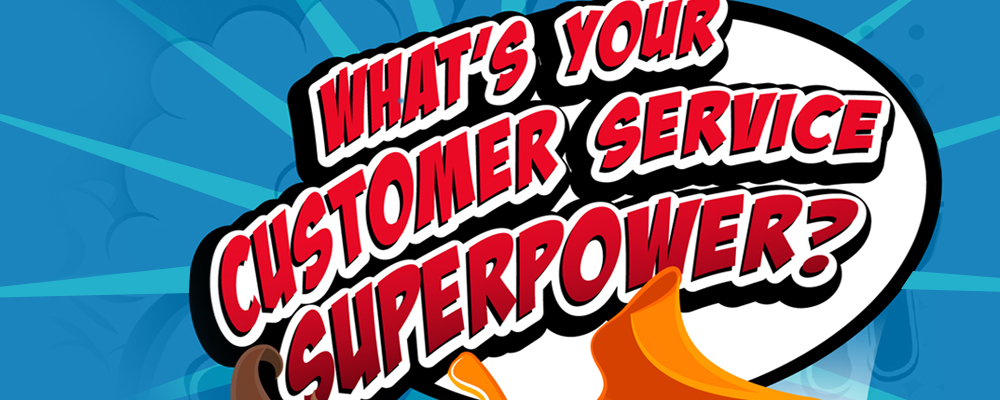Click here to see our full infographic
Of all the things you anticipated when you began your career as a nurse, physical therapist, or other healthcare professional — the long hours, the never-ending need to keep up with rapid clinical developments, the ethical challenges — you probably didn’t expect this revelation: You’re in the customer service business.
Actually, in healthcare circles, “patient satisfaction” is the preferred term; but changing a label hasn’t prompted some clinicians to embrace the “customer” part of the services they provide. For many nurses, physical therapists, and other clinicians, the very idea of viewing patients as customers or consumers feels suspect at best. Patients are not car or shoe purchasers, after all; and while the healthcare industry offers unique, highly personal services, hospitals and healthcare clinics are not day spas or hotels.
Sure, patients pay for healthcare services, though indirectly through insurance, as Shirie Leng, MD, points out in a MedPageToday blog post. Unlike customers in the retail sense, Leng says, patients may not receive immediate gratification when they seek healthcare services. Often they wait for test results, for example; and sometimes the information they receive is disheartening or even frightening. They can’t demand only positive results. And while the patient certainly comes first in healthcare, the other old adage that the customer is always right just doesn’t apply. How many times have your patients been absolutely, maddeningly — perhaps even dangerously — wrong about ignoring symptoms, diagnosing themselves via the Internet, or otherwise pursuing self-treatment?
What’s more, some clinicians have become wary that the rising importance placed on patient satisfaction in their workplace relates more to the health of their employers than the health of their patients.
Why All the Fuss?
Active debate over the effectiveness of current patient satisfaction measures in determining clinical outcomes has called into question the value of the so-called “patient experience” in the delivery of quality healthcare. Further research may be needed, but there’s no doubt that hospitals and other healthcare employers push for strong patient satisfaction scores — because they must. Government mandates tie those scores to Medicare reimbursement, for example; and promoting highly satisfied patients helps healthcare organizations attract new patients.
Yet there’s also evidence that patient satisfaction reflects quality care and leads to positive clinical results. The New England Journal of Medicine explored the conflicting science behind satisfied patients in 2013.
“Some studies indicated patient-experience measures have no relation to the quality of care,” the NEJM article stated. “But some studies found that better patient experiences — even more than adherence to clinical guidelines — are associated with better outcomes.”
Since then, the pro-and-con discussion has revolved more around the ways in which patient satisfaction is measured (by internal survey or the federally mandated Hospital Consumer Assessment of Healthcare Providers and Systems, or HCAHPS) than the generally accepted notion that healthcare professionals’ attitudes and mannerisms toward patients could impact clinical outcomes.
Quality Care by Any Name
There’s some common sense to be applied here. People tend to respond well to positive experiences. This phenomenon happens even when those encounters involve an activity in which they’re reluctant to participate, from paying parking fees to having a colonoscopy. Intuitively, clinicians know that the more satisfied patients are with their care, the more likely they’ll be to come back for more — to attend follow-up visits, for instance, or to adhere to medication regimens.
When you act courteously toward and show respect for every patient, when you focus on communicating well and developing a trusting relationship with your patients, when you pay attention and respond to your patients’ cultural needs, you’re providing customer service — or, if you prefer, contributing to patient satisfaction. Better yet, you’re participating in the holy grail of optimal healthcare delivery: patient-focused care. And that lies at the heart of all you strive to achieve in your practice no matter what you call it.
5 Tips for Great Customer/Patient Service
You’ve centered your career on your innate desire to help others, but that doesn’t mean you’ve inherited a knack for people skills. Healthcare professionals can learn a thing or two about relationship building from the time-tested advice of the pros in customer service. Consider adapting expert Micah Solomon’s 5 All-Time Top Tips for great customer service in business to your clinical practice:
1. Obsess over the beginning and ending of the customer (patient) interaction.
The science confirming brain function, human behavior, and first impressions continues to hold firm: First impressions are formed within the first 10 seconds of meeting someone. They’re also hard to dislodge once they’re formed.
You may be rushed, you may be tired, or you may still feel the sting of a minor run-in with a colleague; but discipline yourself to make those first few seconds count — and not just with new patients, but also those who are familiar to you. Take a deep breath and present a professional but warm and friendly demeanor every time you walk through the exam room door or pull back the cubicle curtain. Make putting your patients at ease a priority.
Use that same discipline to end each patient encounter. Ensure your patient understands what’s next, even if it’s just an annual appointment.
2. Do the hustle.
No one likes to be kept waiting, not for a product they’ve ordered and certainly not for news that they’re going to be okay — or not.
Some wait times in healthcare amount to process problems, while others reflect patient volume. Regardless, commit to doing your best to provide prompt attention to your patients, and be prepared to acknowledge the discomfort of waiting. If you have to perform a function extra carefully according to best practices, or you’re otherwise running behind, find a way to, as Solomon puts it, “redefine expectations or … change the customers’ (patients’) experience of time.” Be upfront and advise your patient that you expect a return phone call, or this treatment or that test, to take a defined period of time, as well as how and why delays might occur.
3. Offload the transactional.
In business, this means automating the customer experience as much as possible. In healthcare, it translates to streamlining the patient experience. Unleash your natural juggler, and look for ways to concurrently provide multiple services for any given patient. Can you reduce Mrs. Pepper’s wait time and anxiety by corralling a colleague to find out why her 24-hour urine results are not in the record while you draw her blood? Can you recommend Mr. Simon’s next PT appointment be scheduled on the same day as his follow-up with his cardiologist to save him an extra trip to the clinic?
Even the smallest of accommodations to meet your patients’ unique needs can make you a hero.
4. Don’t just be good — be memorably good.
A study by Press Ganey Associates, a leading healthcare consulting firm focusing on the patient experience, found three principal drivers of patient loyalty to healthcare providers:
- Patients’ confidence in the provider
- Teamwork and coordination among clinicians
- Assurance that providers are concerned about patients’ worries and questions
Honestly rate yourself against these criteria. Are you communicating to your patients in ways that engender trust? Is your camaraderie with colleagues always on display? Do you pause from electronic charting to look your patients in the eye and show your concern for them?
You have a big responsibility here. Your actions (or lack thereof) can impact not only your patients’ desire to return to your healthcare setting or practice, but also to their willingness to participate in future healthcare activities. Show your skill as well as your empathy. You’ll be remembered for it.
5. Learn to apologize.
When medical errors happen, clinicians should always follow the guidelines of their employing organizations in their communication with patients. But small, run-of-the-mill mistakes deserve to be acknowledged. Did you momentarily blank out that your patient reported she was chilled and would like a blanket? Bring the blanket and a simple “sorry.” Did the physician call that you were obligated to take, but which interrupted your patient’s therapy, last longer than you anticipated? Say as much to your patient. Offer a quick but sincere apology and refocus your attention on your patients’ needs.
At Eisenhower Medical Center, patient satisfaction — derived from excellent, patient-focused care — is our passion. Learn more about our culture of excellence and top priorities on our Careers Page, and apply to join our team of dedicated professionals.
Originally posted on 8/10/2017




